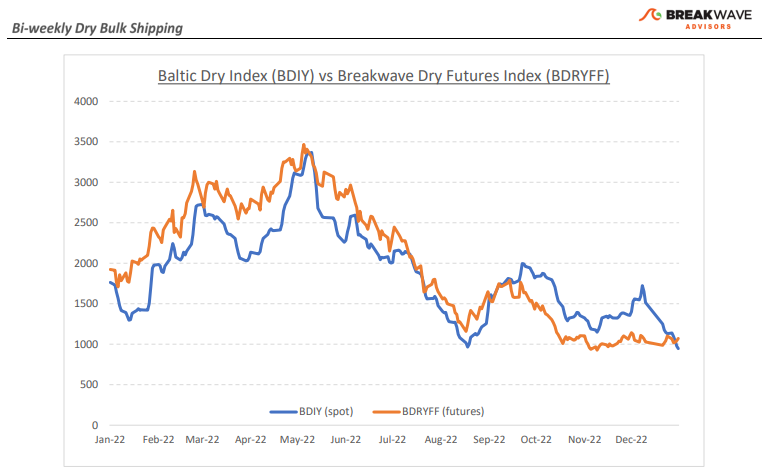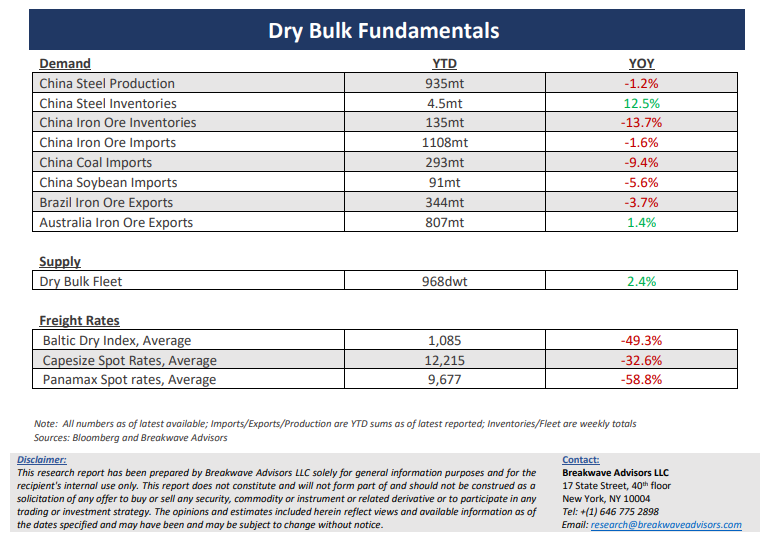· Higher lows/higher highs could be on the cards this year – As dry bulk activity resumes following the Christmas holidays, traders are faced with the anticipated seasonal slowdown and thus falling spot freight rates across all asset classes. The spot market inadvertently affects future expectations, although in the last week or so freight futures prices have begun to show some much-needed optimism, pushing the curve into a contango and signaling increased enthusiasm about China’s import prospects once the Northern hemisphere exits winter. As we have stated before, we also expect better spot activity in the Spring, as China’s Covid wave recedes, the significant stimulus in the pipeline finds its way into infrastructure spending, and consumers in China employ some of the considerable savings accumulated during the past two years during when the restrictive Covid policies have limited their ability to spend, especially in real estate. Freight is a volatile asset class and thus steady increases or decreases are rare. However, we anticipate an environment of higher lows and higher highs as the year progresses, and although the averages will ultimately be determined by the extremes, overall, the opportunity set in dry bulk is still favorable for the ones who are willing to see past the daily fluctuations that are always the norm for this market.
· Early Chinese New Year and relaxed Covid controls to shape the near-term direction of economic activity – The next couple of weeks should be characterized by the usual slowdown in activity in China, as the early Chinese New Year (January 22) combined with significant ongoing Covid infections, continue to limit the country’s ability to exit the multiyear long slump in economic growth. However, come Spring, we anticipate the reverse to happen. All the ingredients are in place for a major push in the economy in a very similar fashion to what happened in the Western world in the months following the reopening of the economies post Covid. In a country where economic activity is still dominated by real estate and infrastructure spending, the industries that will most likely benefit from such a reopening will certainly touch housing, and as a result, demand for steel and iron ore. We anticipate increased iron ore and coal imports to play a major role in such a scenario, benefiting dry bulk shipping beyond what the expectations currently are for the rest of the year. We continue to believe that the Chinese economy is past its trough and the speed and intensity of the upcycle will mainly be determined by the central government’s willingness to tolerate the associated inflationary pressures similar to the ones that occurred in the western world.
· Dry bulk focus shifts back to fundamentals – Following a period of high uncertainty and significant disruptions across the commodity spectrum, the gradual normalization of trade is shifting the market’s attention back to the traditional demand and supply dynamics that have shaped dry bulk profitability for decades. As effective fleet supply growth for the next few years looks marginal, demand will be the main determinant of spot freight rates with China returning back to the driver’s seat as the dominant force of bulk imports and thus shipping demand.


